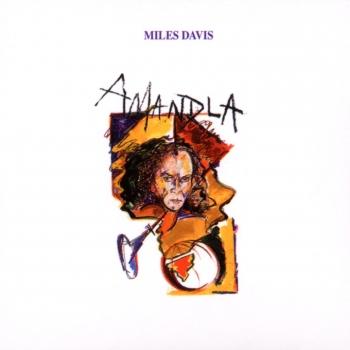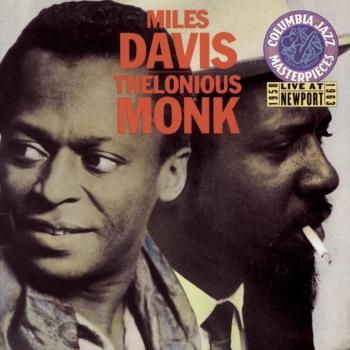
Conception Miles Davis
Album Info
Album Veröffentlichung:
1956
HRA-Veröffentlichung:
24.03.2016
Label: Concord Records
Genre: Jazz
Subgenre: Cool
Interpret: Miles Davis, Stan Getz, Gerry Mulligan, Lee Konitz & Martial Solal, Sonny Rollins, Zoot Sims
Komponist: Miles Davis
Das Album enthält Albumcover Booklet (PDF)
Entschuldigen Sie bitte!
Sehr geehrter HIGHRESAUDIO Besucher,
leider kann das Album zurzeit aufgrund von Länder- und Lizenzbeschränkungen nicht gekauft werden oder uns liegt der offizielle Veröffentlichungstermin für Ihr Land noch nicht vor. Wir aktualisieren unsere Veröffentlichungstermine ein- bis zweimal die Woche. Bitte schauen Sie ab und zu mal wieder rein.
Wir empfehlen Ihnen das Album auf Ihre Merkliste zu setzen.
Wir bedanken uns für Ihr Verständnis und Ihre Geduld.
Ihr, HIGHRESAUDIO
- 1 Odjenar 02:55
- 2 Hibeck 03:09
- 3 Yesterdays 02:29
- 4 Ezz-thetic 02:56
- 5 Indian Summer 02:37
- 6 Duet For Saxophone And Guitar 02:41
- 7 Conception 04:03
- 8 My Old Flame 06:37
- 9 Intoit 03:22
- 10 Prezervation 02:45
- 11 I May Be Wrong 03:30
- 12 So What 02:44
Info zu Conception
„A unique all-star set recorded in various combinations between 1949 and 1951, Conception is an underappreciated masterpiece of cerebral cool jazz. Although Miles Davis gets top billing, he appears on only half the album and then most often as a sideman with only occasional solos. Saxophonists Lee Konitz, Stan Getz, and Gerry Mulligan are the true stars of the album, with Konitz particularly shining. His two duets with guitarist Billy Bauer, a relaxed take on Victor Herbert's standard 'Indian Summer' and his own 'Duet for Saxophone and Guitar,' are outstanding examples of cool jazz as the term was originally understood before it came to signify new age-leaning elevator music; Konitz's solos in 'Indian Summer' disassemble the melody entirely while remaining accessibly tonal, and Bauer's filigree guitar lines stay clear of the uninspired comping of so many jazz guitarists while never sounding overly busy. Of the full-band pieces, Davis' solo spotlight on George Shearing's 'Conception' finds the trumpeter in transition from the still soundscapes of the Birth of the Cool sessions to the more aggressive playing of his Capitol sets, and Stan Getz's two showcases, the originals 'Prezervation' and 'Intoit,' feature the saxophonist in his early role as a committed Lester Young disciple, fronting a solid rhythm trio featuring the underrated pianist Al Haig. An excellent album featuring some outstanding and varied tracks, Conception is well worth seeking out.“ (Stewart Mason, AMG)
Miles Davis, trumpet
Sonny Rollins, tenor saxophone
Zoot Sims, tenor saxophone
Stan Getz, saxophone
Lee Konitz, saxophone
Charlie Kennedy, saxophone
Gerry Mulligan, saxophone
J.J. Johnson, trombone
Kai Winding, trombone
Walter Bishop, piano
Sal Mosca, piano
Al Haig, piano
Tony Aless, piano
Billy Bauer, guitar
Tommy Potter, bass
Arnold Fishkin, bass
Gene Ramey, bass
Chubby Jackson, bass
Art Blakey, drums
Roy Haynes, drums
Max Roach, drums
Stan Levey, drums
Don Lamond, drums
Chubby Jackson's Orchestra
Recorded at the Van Gelder Studio, Hackensack, New Jersey between June 21, 1949 and October 5, 1951
Produced by Bob Weinstock
Digitally remastered
Please Note: we do not offer the 192 kHz version of this album, because there is no audible difference to the 96 kHz version!
Kaum ein anderer Musiker vermochte die Geschichte des Jazz derart nachhaltig zu beeinflussen, wie der am 26.05.1926 in Alton, Illinois geborene und in St. Louis aufgewachsene Miles Davis. Ohne den 'Prince of Darkness' wären die meisten Schlüsselentwicklungen des Jazz ab 1950 undenkbar gewesen. Mit unnachahmlicher Intonation und sparsamer melodischer Gestaltungskraft hat sich der Trompeter den Status einer Pop-Ikone erspielt.
Seine ersten wichtigen Gehversuche machte Miles in New York, wo er mit seinem musikalischen Vorbild Charlie Parker zusammentraf, in dessen Band er umgehend spielte. 1948 leitete der Trompeter bereits seine eigene Band, die mit Arrangements von Gil Evans zu den 'Birth Of The Cool'-Sessions führte. Neben seinen freelance Arbeiten gründete Miles Davis 1955 sein erstes Quintett bestehend aus Red Garland, Paul Chambers, Philly Joe Jones und John Coltrane. In den Jahren 1963-68 formierte er das zweite große Quintet, in welchem der junge Wayne Shorter am Saxophon brillierte (mit Herbie Hancock, Ron Carter und Tony Williams).
Die späten 60-er Jahre brachten unter Miles' Impuls die Wende hin zum Jazz Rock. Alben wie 'Bitches Brew' und 'We Want Miles' stehen paradigmatisch für diese Zeit. In der ersten Hälfte der 70-er Jahre veränderte der Ausnahmetrompeter häufig die Besetzungen seiner Band. In großzügig angelegten Gruppenimprovisationen integrierte er die vormals 'jazzfremden' Tablas, Sitar und diverse Percussioninstrumente. Den Sound seiner Trompete veränderte er mit dem Einsatz eines WahWah-Pedals. Die psychedelisch anmutende Musik dieser Zeit polarisierte das Publikum, viele Fans des 'frühen Miles' wollten den neuen 'elektrischen' Weg nicht mitvollziehen, doch Davis zielte auf ein junges, experimentierfreudiges Publikum.
Nach längerer Zurückgezogenheit aufgrund von Drogenproblemen kehrte der 'Prince of Darkness' in den frühen 80-er Jahren mit jungen Musikern zurück, seine Band wurde zum Sprungbrett für die wichtigsten Karrieren des aktuellen Jazz. Unter seinen Schülern waren John Scofield, Kenny Garrett, Darryl Jones und Marcus Miller. Der Bassist, Multi-Instrumentalist und Produzent Miller schuf mit Miles Davis die deutlich von der aktuellen Popmusik beeinflußten Spätwerke 'Tutu' und 'Amandla'. Diese Alben zeigen in vollendeten Produktionen das Hit-Potential des Trompeters, der in zahllosen Konzerten dieses Material immer neu als elektrisierender Improvisator präsentierte. Am 28.09.1991 starb der wichtigste Musiker des Jazz wenige Wochen nach seinem letzten Konzert an einer Lungenentzündung. Das posthum veröffentlichte Album 'Doo-Bop' wurde 1992 mit dem Grammy in der Kategorie 'Best R&B Instrumental Performance' ausgezeichnet.
Booklet für Conception





































